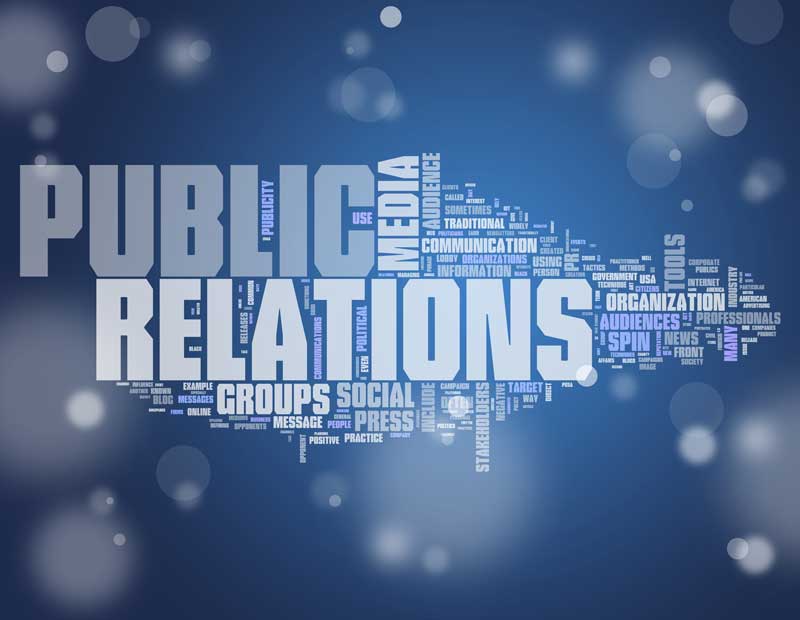Understanding the differences between PR, advertising, and marketing is crucial for businesses navigating today’s digital landscape. Each plays a distinct role in shaping brand perception, generating growth, and achieving business goals. While they may appear similar, they serve different purposes, operate through different channels, and measure success differently.

This article will break down what PR, advertising, and marketing are, explaining how they differ, how they work, and why each is important for brands in the digital era.
What is PR?
Public Relations (PR) is primarily about building trust and influencing how stakeholders perceive a brand. Unlike advertising, PR does not rely on direct payments for exposure. Instead, it depends on third-party endorsements to share a story and build credibility.
Building Trust Through Earned Media
The core of PR lies in earned media. This means gaining coverage in outlets such as newspapers, online publications, podcasts, blogs, or influencer platforms without paying for it. For example, a feature in a publication like TechCrunch can enhance a company’s reputation and attract investor interest.
This endorsement works because it comes from a trusted source. Journalists and influencers already hold credibility with their audiences, and when they cover a brand, that credibility transfers to the brand itself.
PR as Two-Way Communication
PR is not just about sending messages out. It requires engaging with the audience and paying attention to how communication is received. This two-way dynamic helps refine strategies and improve outcomes.
Long-Term Impact of PR
PR is a long-term strategy focused on outcomes such as:
- Increasing share of voice against competitors
- Driving traffic from third-party mentions
- Securing message visibility through credible endorsements
It also involves crisis management and damage control, ensuring brands maintain a positive image even during challenges.
High Credibility, Less Control
One unique aspect of PR is that brands have less control over the final message since it relies on external voices. However, the reward is higher credibility when coverage is achieved.
What is Advertising?
Advertising relies on paid media, where companies pay to place their messages in front of audiences. This method gives businesses full control over what is communicated but often carries lower credibility since audiences know it is paid for.
Paid Media and Control
When a brand buys advertising space in publications, websites, events, or podcasts, it controls every detail of the message. While this ensures consistent branding, it signals to audiences that the message is promotional.
One-Way Communication
Advertising is typically one-way communication, moving a message directly from company to audience without the interactive, trust-building element of PR.
Sales-Driven and Performance-Based
Unlike PR’s focus on awareness and trust, advertising is more sales-driven. Its success is evaluated based on:
- Direct sales impact
- Brand awareness lift
- Clear campaign performance metrics
High Cost, Lower Trust
Although advertising allows more precise targeting of consumer groups, it often requires a larger budget than PR. It is also considered less credible because audiences clearly recognize it as paid promotion.
Creative and Emotional Messaging
Advertising often uses creativity and emotional appeal to capture attention. Campaigns are designed to be visually powerful and persuasive to prompt immediate consumer action.
What is Marketing?
Marketing acts as the umbrella strategy that includes both PR and advertising, as well as other forms of communication and engagement. Its purpose is to identify, anticipate, and satisfy customer needs profitably.
The Four Media Types in Marketing
Marketing brings together multiple channels including:
- Earned media (PR coverage and third-party endorsements)
- Paid media (advertising efforts)
- Owned media (brand’s own assets such as websites, blogs, newsletters)
- Shared media (social media interactions on platforms like LinkedIn, Instagram, TikTok, YouTube, and Facebook)
Customer Journey From Awareness to Loyalty
Marketing oversees the full customer journey, ensuring value creation at every stage—from initial awareness to becoming a loyal customer. This involves supporting not only lead generation but also sales, customer experience, and retention.
Short-Term and Long-Term Approach
Marketing blends both immediate sales goals and long-term relationship-building strategies. Campaign performance is often evaluated in terms of:
- Leads generated
- Sales impact
- Customer loyalty and retention
- Contribution to brand value
More Than Just Sales
Marketing aims to create and deliver value that resonates with customers. It’s not limited to acquiring buyers but also involves nurturing long-term relationships with those who have already interacted with the brand.
- Key Differences Between PR, Advertising, and Marketing
- PR focuses on trust, credibility, and earned media.
- Advertising is focused on paid promotions, direct sales impact, and creative campaigns.
Marketing encompasses both, serving as the overarching strategy that aligns PR and advertising with customer needs and business goals.
Together, these practices complement each other, with PR initiating awareness and credibility, advertising driving immediate sales, and marketing ensuring long-term value delivery.
Conclusion
PR, advertising, and marketing each play unique but interconnected roles in brand growth. PR builds credibility through earned media, advertising promotes products and drives sales with paid media, and marketing ties everything together by managing the entire customer journey.
Brands that understand how these disciplines differ—and work together—can create stronger strategies, achieve measurable results, and build lasting connections with their audiences.
